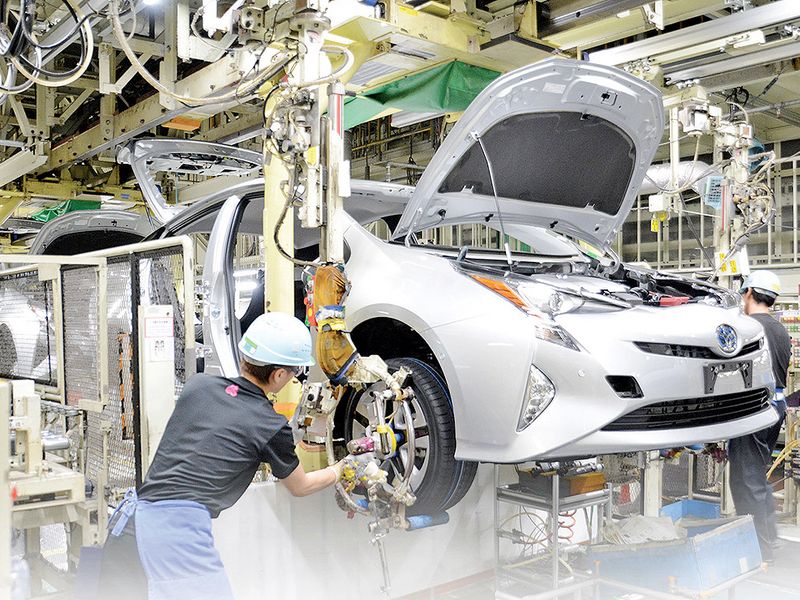
TOKYO — Toyota Motor Corp. will open the taps on production in Japan to expedite shipments to the U.S., where local factories are still slowly ramping up and inventories are evaporating.
Toyota’s return to production in Japan occurred quickly, after dialing back plans in the face of diminished sales as a result of the COVID-19 pandemic.
Toyota now plans to ramp up Japan production to 90 percent of pre-pandemic levels, and it is prioritizing models that it exports to the U.S.
Toyota’s Japan production was down 40 percent in June, as the company responded to plunging demand. But for July, volumes will be down only 10 percent.
Giving new priority to U.S. retailers mostly will affect production that had been earmarked for Japan, mainland Asia and Middle East markets, Toyota said.
The plan unfolds as U.S. shoppers emerge from weeks of lockdown and business closings, hungry for vehicles and pressuring depleted dealership stocks.
Bob Carter, head of sales at Toyota Motor North America, said this month that the industry likely will go through several “lumpy” months as North American plants gradually come back online.
Inventory at Toyota Motor North America shrank to a 44-day supply on June 1, down dramatically from a 116-day supply the month before. With 280,900 vehicles in stock, Toyota had a lower supply than American Honda, Mazda North America and Hyundai-Kia. Light trucks were especially tight.
North American-built vehicles account for about 70 percent of U.S. sales for the Toyota and Lexus brands. But the company still imports such nameplates as the Prius, C-HR, 4Runner, some RAV4s, the new Venza and virtually every Lexus other than the ES sedan and some RX crossovers.
Toyota restarted its North American factories on May 11 after a prolonged shutdown.
In Japan, by contrast, Toyota never completely stopped production over concerns about the pandemic. Instead, it temporarily suspended certain lines or plants to trim supply to demand.
This helped keep Japanese parts suppliers operating during the downturn. The functioning supply chain is giving momentum to the rebound now that it is time to fire up work again.
Toyota is still producing less at home than planned before the pandemic. But that is because of slack demand, not because of supply chain interruptions, a spokesman said.
Toyota hopes to get its global monthly sales rate back to 90 percent of its original plan by December. To hit that target, the company needs to prime the pipeline with product.
Last December, before the virus disruption, Toyota predicted its global sales would be roughly flat for 2020, at 10.77 million vehicles, including volume from its Daihatsu minicar and Hino truckmaking subsidiaries.
But the pandemic torpedoed global demand.
Toyota warned in May that its operating profit would drop 80 percent in the current fiscal year ending March 31, 2021. But it refrained from making other forecasts, citing market uncertainty.
CFO Kenta Kon said at the time he expected April to be the bottom of the slump and forecast that the company would return to normal operating levels by the end of the year or in early 2021.
But that recovery may be ahead of schedule now. After it reaches 90 percent of normal production levels in July, Toyota expects further improvement in Japanese output in August.